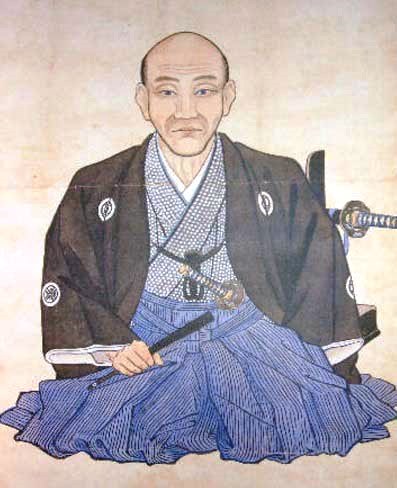In Kanto area at the end of Edo period, two splendid farmer leaders appeared.They are Yugaku Ohara (1797-1858) and Sontoku Ninomiya (1787-1856). Two people challenged the reconstruction of rural areas that were devastated by the Great Famine of Tenpo years and Tenmei years.
Yugaku established the mutual organization (“senzokabukumiai” (association of ancestors shares)), for the purpose of survival of the families, at Nagabe village (now Nagabe, Asahi-city, Chiba prefecture)
Association’s management methods are as follows; ①Each association member contributes farmland equivalent to 5 gold cars, and all members share them and reserve the profit obtained from them, ② Until the reserve per family becomes equal to or more than 100 cars, the reserve can not be used for the loan funds. ③ When the reserve per family becomes equal to or more than 100 cars, the half of reserve can be used for the rescue, and the other half shall be reserved for descendants.
It can be said that the most significant origin of world cooperatives is “The Rochdale Society of Equitable Pioneers” founded in 1844 in United Kingdom. Sooner than that, the prototype of the cooperatives had been born in Japan in 1838.
However, such joint ownership of land by farmers was in conflict with the land system of the government of shogunate. Yugaku was accused of guilty of the formation of “association of ancestors shares”. When he finished his sentences and returned to the village, he was shocked to see figure of desolate village and committed suicide by seppuku.
Sontoku Ninomiya was born into a wealthy farmer at Kayama village (now Odawara-city, Kanagawa prefecture). He lost his father at the age of 14, lost his mother at the age of 16, and was taken off to his uncle.
At that time, samurai of Odawara Domain had dificulty financially. Sontoku, who had been raised to the apprenticeship in Hattori family, chief retainer, realized debt repayment by eliminating waste and making efforts to thrift for 5 years.
Continuously, he challenged and realized fiscal reconstruction of Sakuramachi territory (now Mooka city, Tochigi prefecture) of Utsu family, branch of Odawara Domain.
His ability became famous so that neighboring regions asked him one after another for the guidance of refinancing. His procedure of reconstruction was easy to understand as follows;
– Protect the attainment of feasible general equilibriun with fiscal balance (“bundo (computational general equilibrium)”).
– Save the positive surplus in preparation for the future, or cede such surplus to others (“suijo (concession)”)
He has created the idea of “hotoku thought (teachings of returning virtue by virtue)”, in combination of these economic concepts and morality concepts such as “kinben (hard work)” and “shisei (sincerity)”.
He thought “Givie and take, or helping each other, shall form a happy society.” It can be said that his idea was cooperatives movement itself. This “hotoku thought”, spread by his students, nationally promoted establishment of “hotoku societies” with cooperatives functions.



